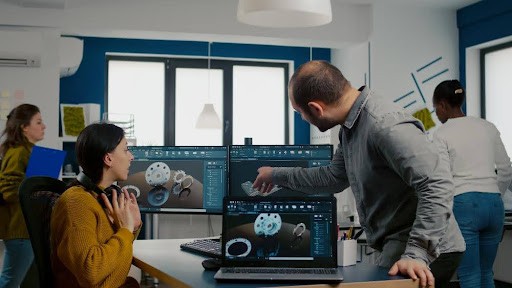Mechanical design software stands as a beacon of innovation, offering a plethora of tools and functionalities that can significantly streamline the product development process. Dassault systemes software for engineering design can help engineers create detailed 3D models of products, simulate their performance, and test their designs.
This allows them to quickly identify design flaws and potential areas of optimization, saving time and resources. Additionally, it can provide accurate cost estimates, helping to ensure the product can be produced within budget.
How Mechanical Design Software Can Transform Product Development?
Efficient Prototyping:
Gone are the days of labor-intensive prototyping processes that consume both time and resources. Mechanical design software enables engineers to create virtual prototypes with unparalleled precision and detail.
By leveraging advanced simulation capabilities, designers can test the functionality and performance of their designs in a virtual environment, identifying potential flaws and making necessary adjustments before moving to physical prototyping. This not only accelerates the development cycle but also minimizes the risks associated with costly design iterations.
Collaborative Design:
Effective collaboration lies at the heart of successful product development. Mechanical design software facilitates seamless collaboration among team members, regardless of their geographical locations.
Through cloud-based platforms and real-time collaboration tools, engineers can work together on a single design simultaneously, exchanging ideas, providing feedback, and iterating rapidly. This collaborative approach fosters innovation and ensures that every aspect of the product is thoroughly scrutinized before it goes into production.
Iterative Design Process:
The iterative nature of product development demands a flexible approach to design. Mechanical design software empowers designers to explore multiple design iterations quickly and efficiently.
With parametric modeling capabilities, engineers can make iterative changes to their designs without having to start from scratch, saving valuable time and effort. This iterative design process allows for rapid experimentation and optimization, resulting in superior products that meet the evolving needs of the market.
Integrated Workflows:
Product development involves a myriad of interconnected processes, from design and analysis to manufacturing and assembly. Mechanical design software offers integrated workflows that streamline these processes, eliminating the need for manual data transfer between different software applications.
By consolidating all aspects of the design process within a single platform, engineers can maintain data integrity, reduce errors, and ensure consistency across the entire product lifecycle.
Simulation and Analysis:
Understanding the behavior of a product under various operating conditions is crucial for its success in the market. Mechanical design software comes equipped with powerful simulation and analysis tools that enable engineers to predict the performance of their designs with remarkable accuracy.
Whether it’s stress analysis, thermal simulation, or fluid dynamics, these software solutions provide valuable insights that inform design decisions and optimize product performance.
Customization and Automation:
Every product is unique, and so are the challenges associated with its design and manufacturing. Mechanical design software offers a high degree of customization, allowing engineers to tailor their workflows to suit the specific requirements of their projects.
These software solutions are increasingly incorporating automation capabilities that streamline repetitive tasks and enhance productivity.
Enhanced Visualization and Communication:
Mechanical design software enhances visualization capabilities, allowing designers to create photorealistic renderings and animations that vividly showcase their designs. These visualizations serve as powerful communication tools, enabling stakeholders to envision the final product and provide valuable feedback early in the development process.
Enhanced visualization facilitates clear and concise communication, fostering alignment and driving project success.
Conclusion
Mechanical design software has emerged as a game-changer in the realm of product development. With efficient prototyping, collaborative design, iterative workflows, integrated processes, simulation capabilities, and automation, mechanical design software empowers designers to create innovative products that redefine industry standards.




